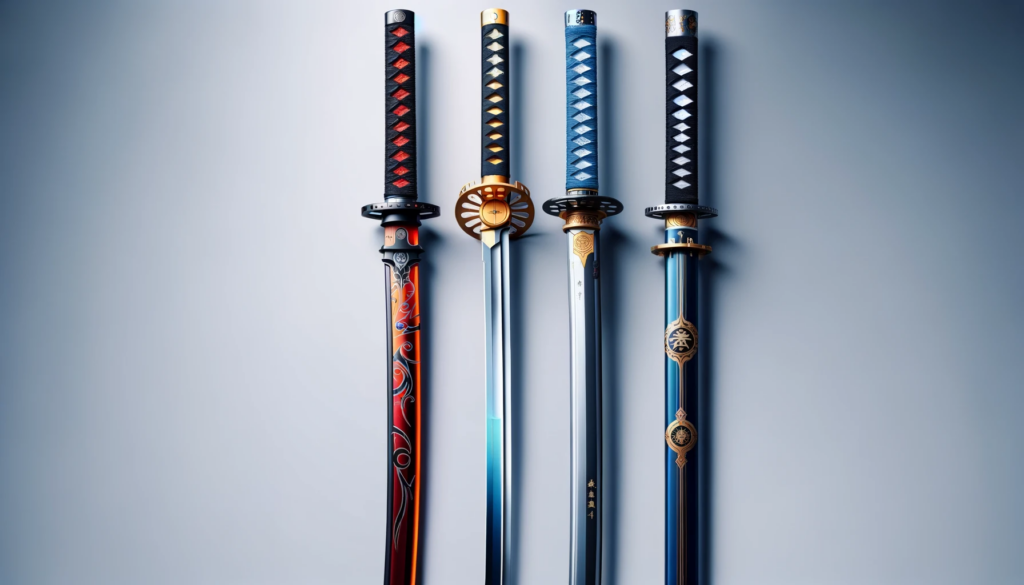Introduction
The Japanese katana, a weapon steeped in history and tradition, is more than just a sword; it’s a work of art, a cultural icon, and a testament to the craftsmanship of its makers. In this article, we explore the rich history and the intricate process of making a Japanese katana, and provide insights for those interested in katana for sale.
The History of the Japanese Katana
The origins of the Japanese katana date back to the Heian period (794-1185 AD), evolving from the need for a weapon that could be drawn quickly for close combat. Over centuries, it has become a symbol of the samurai class, embodying their principles of honour, precision, and discipline. The katana is not just a weapon but a spiritual symbol, often associated with legendary stories and historical figures.
Crafting a Masterpiece
The creation of a Japanese katana is a meticulous and time-honoured process, often taking months or even years to complete. The swordsmith starts by selecting the finest steel, which is then heated, hammered, and folded repeatedly. This labour-intensive process is crucial for creating a blade that is both resilient and razor-sharp. The unique curvature of the katana, known for its distinctive beauty, is achieved through a careful quenching process. You can get an authentic katana sword skillfully crafted by ancient forging techniques passed down from generations from Samurai Sword Store. Their original, high-quality swords symbolize resilience, honor, and the rich Japanese history.
The Artistic Touch
Beyond its combat capabilities, each katana is a masterpiece of art. Skilled artisans embellish the sword with intricate designs and inscriptions, often making each piece unique. The handle and scabbard are also crafted with great care, often using high-quality wood, rayskin, and silk for wrapping. These artistic elements contribute not just to the aesthetic appeal of the katana but also to its balance and ergonomics.
Katanas in Modern Times
Today, the allure of the Japanese katana endures. Enthusiasts, collectors, and martial artists around the world seek katanas for their beauty, history, and craftsmanship. A genuine Japanese katana is a prized possession, a collector’s item that holds immense historical and cultural value.
Katana for Sale: A Buyer’s Guide
For those interested in purchasing a katana, the journey can be as exciting as it is daunting. Here are some key points to consider:
Authenticity: Ensure that you are buying an authentic Japanese katana. Look for swords made by reputable swordsmiths, and check for a certificate of authenticity if available.
Purpose: Are you looking for a katana for display, martial arts practice, or as an investment? Your purpose will dictate the type of katana you should look for.
Quality of Craftsmanship: Assess the quality of the blade, the materials used, and the level of craftsmanship. A well-made katana is balanced, has a sharp edge, and displays fine detailing.
Legal Considerations: Be aware of the laws in your area regarding the ownership and purchase of swords. Some regions have strict regulations about buying and owning a katana.
Budget: Prices for katanas vary widely, from affordable replicas to high-end, artisan-crafted pieces. Set a budget that aligns with your purpose and preferences.
Where to Find Katana for Sale
Katana for sale can be found at specialised sword shops, online marketplaces, and through direct contact with swordsmiths. When purchasing online, it’s crucial to do thorough research and buy from reputable dealers. Attending sword exhibitions and auctions can also be an excellent way to find high-quality katanas.
Conclusion
The Japanese katana is more than a weapon; it’s a symbol of a rich cultural heritage and an embodiment of the artistry of its creators. Whether you are a collector, a martial arts practitioner, or simply an admirer of Japanese culture, owning a katana can be a deeply rewarding experience. As you embark on your journey to find the perfect katana for sale, remember to appreciate the history, craftsmanship, and art that make each katana a unique masterpiece.
More Read On: Spero Magazine




